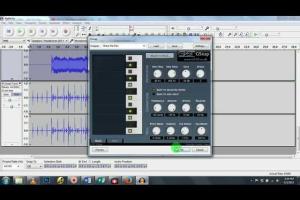Mastering Audacity: A Comprehensive Guide for Beginners and Pros

-
Quick Links:
- Introduction to Audacity
- Installing Audacity
- Understanding the Audacity Interface
- Basic Functions of Audacity
- Editing Audio in Audacity
- Applying Effects
- Exporting Your Audio
- Advanced Techniques in Audacity
- Case Studies and Real-World Applications
- Expert Insights on Using Audacity
- FAQs
Introduction to Audacity
Audacity is a free, open-source audio editing software available on multiple platforms. It is widely used by podcasters, musicians, and sound engineers for its comprehensive features and user-friendly interface. Whether you are just starting or looking to enhance your audio production skills, this guide will help you master Audacity.
Installing Audacity
To get started with Audacity, you need to install it on your computer. Follow these steps:
- Visit the official Audacity download page.
- Select your operating system (Windows, macOS, or Linux).
- Download the installer and run it.
- Follow the installation prompts to complete the setup.
Understanding the Audacity Interface
Upon launching Audacity, you will encounter a well-organized interface. Here are the key components:
- Menu Bar: Contains options like File, Edit, View, and Help.
- Transport Toolbar: Includes buttons for play, stop, record, and pause.
- Track Control Panel: Located on the left side of each track, it allows you to manage your audio tracks.
- Waveform Display: Shows the audio waveform of your recordings.
Basic Functions of Audacity
Before diving into editing, it's essential to familiarize yourself with some basic functions:
- Recording: Click the red record button to start capturing audio.
- Importing Audio: Use the File menu to import audio files.
- Playback: Press the play button to listen to your recordings.
Editing Audio in Audacity
Editing audio is one of the most powerful features of Audacity. Here’s how to perform basic edits:
- Selecting Audio: Click and drag over the waveform to select the portion you want to edit.
- Cutting and Copying: Use the Edit menu to cut or copy your selection.
- Deleting Audio: Simply select the audio and press Delete.
- Trimming Audio: Select the audio you wish to keep and use the option “Trim” under the Edit menu.
Applying Effects
Audacity offers a variety of effects to enhance your audio. Here’s a brief overview:
- Normalization: Adjusts the amplitude of the audio to a standard level.
- Reverb: Adds a sense of space to your audio.
- Equalization: Adjusts the balance between frequency components.
Exporting Your Audio
Once you’re satisfied with your edits, you’ll want to export your audio:
- Go to the File menu and select “Export.”
- Choose your desired format (WAV, MP3, etc.).
- Name your file and select the destination folder.
Advanced Techniques in Audacity
For more experienced users, Audacity offers advanced features such as:
- Multi-track Editing: Layer multiple tracks for a complex sound.
- Automation: Automate volume and effect changes over time.
- Plugins: Enhance functionality with VST plugins for additional effects and tools.
Case Studies and Real-World Applications
Let’s look at some real-world applications of Audacity:
- Podcast Production: Many podcasters use Audacity for recording and editing episodes due to its flexibility and cost-effectiveness.
- Music Production: Independent musicians often utilize Audacity to mix and edit tracks before finalizing their music.
Expert Insights on Using Audacity
Here are some tips from industry experts:
"Audacity is a fantastic tool for beginners. Its user-friendly interface helps you focus on creativity rather than technical skills." – Audio Engineer, Jane Doe
"For professionals, using Audacity in conjunction with other software can yield incredible results." – Music Producer, John Smith
FAQs
- 1. Can I use Audacity for free?
- Yes, Audacity is completely free and open-source software.
- 2. Is Audacity available on all platforms?
- Yes, Audacity is available for Windows, macOS, and Linux.
- 3. Can I edit audio in real-time with Audacity?
- Audacity allows for real-time playback, but editing is done after recording.
- 4. What formats can I export audio files to?
- Audacity supports various formats including WAV, MP3, OGG, and more.
- 5. How do I add effects to my audio?
- Use the “Effects” menu to apply a variety of audio effects.
- 6. Does Audacity support VST plugins?
- Yes, Audacity supports VST plugins to enhance its functionality.
- 7. Can I record multiple tracks at once?
- Yes, Audacity supports multi-track recording.
- 8. Is there a mobile version of Audacity?
- No, Audacity does not currently have a mobile version.
- 9. How do I remove background noise in Audacity?
- You can use the “Noise Reduction” effect found in the Effects menu.
- 10. Where can I find tutorials for Audacity?
- Official Audacity tutorials are available on their website.
Random Reads
- How to install graphics card
- How to use wifi direct android connecting sharing images
- How to put a hyperlink in a powerpoint
- How to put a link in an email
- How to replace countertops
- How to replace damaged roof shingles
- Mastering box whisker plots
- Mastering brick cutting
- Sync apple watch health data iphone
- Sync samsung notes windows pc